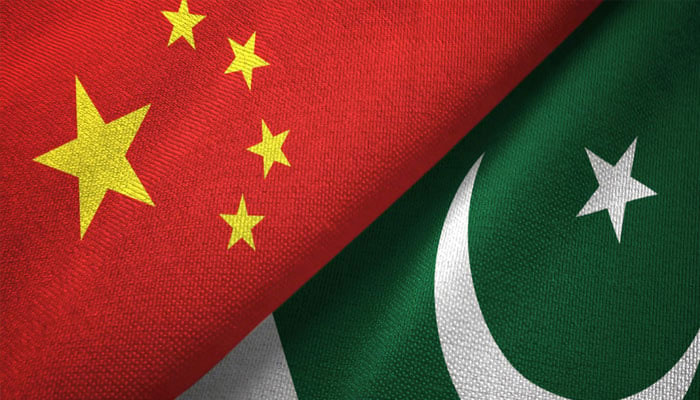High-tech export strategy
A 20-member delegation representing various sectors of Pakistan’s industry left for China on December 10, with the objective of enhancing Pakistan’s exports from the present shamefully low figure of $30 billion to $100 billion.
To succeed, however, the mission needs to have the correct vision and strategy. Pakistan’s myopic export vision in the past is reflected from the fact that 60 per cent of our exports are low value textiles. Our high-tech, high value-added exports are virtually non-existent.
The multifaceted impact of high-tech exports on the economic prosperity and societal progress of nations has alas never been appreciated by us, leading to a huge gap between our imports and exports.
For rapid and sustainable socio-economic development, our razor-sharp national focus should be to manufacture and export high-tech products. In this context, CEPC can be a game-changer, provided that our government can persuade Chinese President Xi Jinping to shift some of China’s major industries including automobiles, electronics, pharmaceuticals, aircraft manufacture, information technologies and others to Pakistan as joint ventures with Pakistani industries, exclusively for export to other countries.
I met Chinese Minister of Science and Technology HE Mr Wang Zhigang on October 21, 2019. During the meeting, I proposed the following initiatives: a joint China-Pakistan committee should be set up for the manufacture and export of high-tech products, involving joint ventures between Chinese and Pakistani industrialists. These joint ventures should be exclusively for the export of manufactured products.
I also suggested that these joint ventures should be in carefully selected high-tech fields such as solid-state batteries for electric vehicles, vaccines, biosimilars, engineering goods, aircraft, automobiles, composite materials, nanotechnology products, defence goods, information technology products based on recent developments (such as artificial intelligence), mineral processing, industrial biotechnology goods, submarines, bullet trains, etc.
The Chinese minister of science enquired why should China be interested in investing in Pakistan when there were far better options for investment within China as well as in many other countries that had a better Ease of Doing-Business Index, political stability, and good technical manpower available.
These were pertinent questions and I proposed that to reach exports worth $100 billion plus, our government could take the following measures to attract Chinese industrialists: offer a 20-year tax holiday; have 10,000 young men and women trained in our engineering universities and universities in China to meet the skill sets needed by each such joint venture industry. This could be done during the first three years of each major new industrial initiative.
Other perks included: comprehensive insurance backed by solid state guarantees in case of disruption of industrial production by the law-and-order situation; free land and meeting 50 per cent of the costs of construction of buildings needed for such joint ventures; electricity and gas at export subsidized rate (ESR) equivalent to 5.0 per cent of rates offered to local industries.
I emphasized that the One Belt One Road initiative with particular focus on CEPC was a game changer for Pakistan. Under its umbrella, the Chinese and Pakistani industries could come together to invest in joint ventures while Chinese and Pakistani academia could launch a focused skill development programme to provide the highly skilled manpower that was needed for such high-tech product manufacturing industries.
The snowball effect of such an initiative with its four pillars involving industry and academia from both sides could change the fate of the country.
My proposal was taken up with great enthusiasm as I was an academician of the Chinese Academy of Sciences, a highly revered position in China. I was also the winner of the highest international award of China, the International Science and Technology Collaboration Award that was conferred on me by the President Xi Jinping in the Great Peoples Hall.
The Chinese minster remarked that this was the first time in his interactions with Pakistan that such a revolutionary and visionary proposal had come forth and that it could change the fate of Pakistan as well as take the Pakistan-China collaboration to new heights. It could also contribute significantly to getting rid of the shackles of foreign debt and relaunching Pakistan as a new Asian tiger.
The Chinese minister immediately announced the name of the Chinese counterpart expert to work on this initiative and requested Pakistan to do the same. Four years have gone by, and the Pakistan government has allowed this golden opportunity to slip away. It may still be revived if the incumbent caretaker prime minister take this proposal forward at the highest level.
In today’s rapidly evolving global economy, high-tech exports are a critical driver of economic growth, national competitiveness, and job creation. Countries that effectively develop and export high-tech products and services can reap the benefits of increased productivity, innovation, and higher living standards.
However, enhancing high-tech exports requires a multi-pronged approach that addresses various factors, ranging from fostering a strong research and development (R&D) ecosystem to creating an enabling business environment.
High-tech products typically embody more knowledge and intellectual property, leading to higher per-unit value and export earnings. Adoption of high-tech solutions in manufacturing and service sectors can significantly improve productivity and efficiency.
The tech sector is a significant source of skilled jobs, leading to increased employment opportunities and higher wages. To bring about this change, the Pakistan government can play a crucial role by providing direct funding for R&D activities through grants, subsidies, and tax breaks.
Incentives such as tax credits and joint ventures with public research institutions can motivate private companies to invest in R&D. Fostering strong partnerships between universities and industry will allow for knowledge transfer, talent exchange, and the development of commercially viable technologies.
Building a skilled workforce is essential for supporting the tech sector. This requires investment in STEM education at all levels, along with specialized training programs to address emerging skills needs. Our government should also strive to simplify regulations and establish clear, transparent, and predictable regulatory frameworks.
Along with this, we need to improve the infrastructure including high-speed internet, reliable power grids, and efficient transportation networks.
Enhancing high-tech exports is a complex but achievable goal. By implementing a strategic and comprehensive approach that addresses both R&D and business environment factors, Pakistan can position itself as a leader in the global high-tech landscape.
This will ultimately lead to economic growth, prosperity, and a higher standard of living for our citizens. There are many examples of countries such as South Korea, Taiwan, China, Israel, Finland, Singapore and others that have rapidly developed high tech exports by transitioning to technology-driven knowledge economies. We must do the same.
The time to act is now -- tomorrow will be too late!
The writer is the former federal minister for science and technology and former founding chairman of the HEC. He can be reached at: ibne_sina@hotmail.com
-
 Duke's Peace Talks With King Charles, Prince William: 'Ball Is In Harry's Court'
Duke's Peace Talks With King Charles, Prince William: 'Ball Is In Harry's Court' -
 New Research Finds Back Pain May Disrupt Men’s Sleep Quality Later In Life
New Research Finds Back Pain May Disrupt Men’s Sleep Quality Later In Life -
 Jennifer Lopez Still 'very Close' With Ben Affleck's Children, Invites Them To Vegas
Jennifer Lopez Still 'very Close' With Ben Affleck's Children, Invites Them To Vegas -
 Matt Damon Gets Honest About Netflix's Way Of Storytelling
Matt Damon Gets Honest About Netflix's Way Of Storytelling -
 Prince William, Harry Rift Still 'simmering Away'
Prince William, Harry Rift Still 'simmering Away' -
 What's Buzzing Around TikTok's 'PineDrama' App: Everything You Need To Know
What's Buzzing Around TikTok's 'PineDrama' App: Everything You Need To Know -
 Who’s Next After Australia’s Under-16s Social Media Ban?
Who’s Next After Australia’s Under-16s Social Media Ban? -
 Do You Have Depression Or Is It Just Monday Blues? Find Out Where Science Stands
Do You Have Depression Or Is It Just Monday Blues? Find Out Where Science Stands -
 Why Claude Is Gaining Momentum In Revolutionizing The AI Landscape
Why Claude Is Gaining Momentum In Revolutionizing The AI Landscape -
 Elon Musk Unveils Plans To Take Humanity To The Moon And Mars
Elon Musk Unveils Plans To Take Humanity To The Moon And Mars -
 Air Pollution May Play A Role In Prostate Cancer Risk, Experts Warn
Air Pollution May Play A Role In Prostate Cancer Risk, Experts Warn -
 Royal Expert Reveals Real Reason King Charles Won't Meet Prince Harry Next Week
Royal Expert Reveals Real Reason King Charles Won't Meet Prince Harry Next Week -
 Ansel Elgort Welcomes His First Baby In Secret
Ansel Elgort Welcomes His First Baby In Secret -
 Startup Aims To Brighten Night Skies With Space Mirrors
Startup Aims To Brighten Night Skies With Space Mirrors -
 Cheaper Cars, Fewer EVs: Trump Administration Shifts ‘auto Policy’ Focus
Cheaper Cars, Fewer EVs: Trump Administration Shifts ‘auto Policy’ Focus -
 Meghan Markle Takes 'breadwinner' Role In Prince Harry's California Life
Meghan Markle Takes 'breadwinner' Role In Prince Harry's California Life




